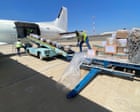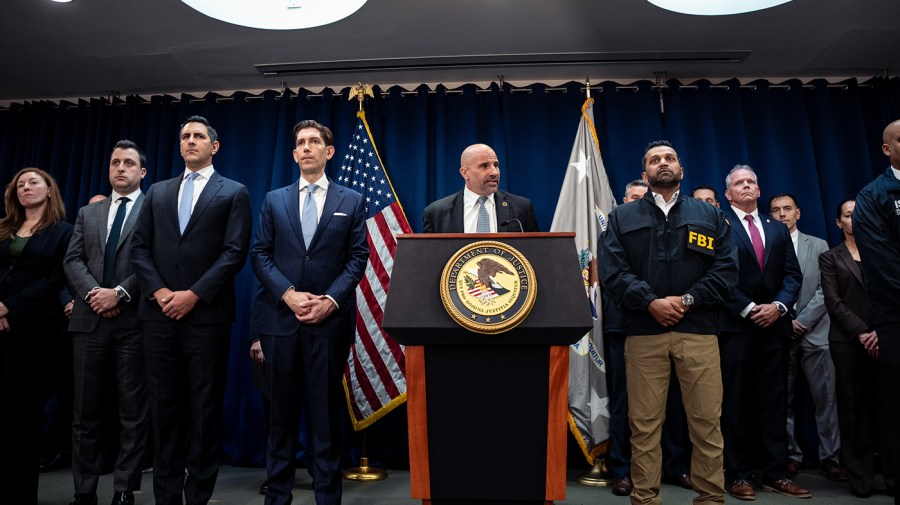
Healthcare facilities today face unprecedented challenges: from rising expectations for a seamless digital experience to staffing shortages, safety concerns, increasing operational costs, and mounting pressure to improve efficiency and outcomes through timely, coordinated care. In response, many organizations are turning to proven technologies like Real-Time Location Systems (RTLS) to drive efficiency, enhance safety, and improve patient care.
Even so, not all location technologies and solution partners are created equal. The difference between a rigid, single-purpose system and a flexible, scalable RTLS platform with ongoing consulting can mean the difference between transformational results and costly setbacks.
The healthcare location intelligence transformation
Healthcare is fundamentally about being in the right place at the right time with the right resources. Whether it’s ensuring a crash cart reaches a code blue in seconds, quickly locating a critical piece of equipment to provide care, or monitoring hand hygiene compliance to prevent infections, actionable location insights have become the invisible backbone of quality care delivery.
Traditional approaches to these challenges have relied on manual processes, fragmented solutions, and siloed technologies that aren’t scalable beyond single use cases. These outdated approaches fail to deliver the comprehensive visibility and actionable insights that modern healthcare and patients expect. The solution lies in adopting flexible location technology platforms that can adapt to diverse needs while scaling with organizational growth and changing requirements.
Patient outcomes: where every second matters
The impact of location technology on patient outcomes is both immediate and measurable. In emergencies, studies have shown that reducing equipment location time by even 30 seconds can significantly improve patient survival rates. When staff can instantly locate clean wheelchairs, ventilators, or infusion pumps, they can focus on delivering care rather than searching for critical resources and delaying treatment.
Beyond emergency response, scalable RTLS platforms enable continuous monitoring that supports proactive care. For example, environmental sensors can alert staff to temperature changes, helping preserve the efficacy of temperature-sensitive medications and vaccines. Patient flow optimization reduces wait times and prevents bottlenecks that could delay time-sensitive treatments. Contact tracing capabilities help prevent healthcare-associated infections (HAIs) by identifying potential exposures before they spread. These preventative methods lead to better care outcomes, which achieve better quality of life for the patient, increased satisfaction for healthcare professionals, and reduced costs for the health organization. A win-win for everyone.
The key advantage of scalable location technology is its ability to support multiple clinical workflows simultaneously. With the right RTLS partner, a single platform can locate assets, monitor environmental conditions, enhance staff safety, and deliver powerful analytics that drive continuous improvement– all while allowing clinicians to stay focused on patient care.
Staff safety: Protecting healthcare’s most valuable player
Healthcare workers face unique safety challenges, from exposure to infectious diseases to workplace violence. Location technology addresses these concerns and increases peace of mind through comprehensive staff protection solutions that go far beyond stationary panic buttons.
Modern RTLS platforms provide discreet, button-activated duress solutions that enable healthcare workers to call for help instantly and without drawing attention. When combined with real-time, instant location capabilities, security teams can respond quickly with precise knowledge of where the alert originated and follow any subsequent movement. This combination of immediate alerting and accurate location data has proven invaluable in preventing escalation, ensuring rapid response, and providing peace of mind for staff in high-risk situations. In addition to staff duress, contact tracing has become increasingly important for healthcare safety. Flexible location systems can automatically capture staff interactions and proximity patterns, enabling rapid identification of potential exposures without relying on potentially incomplete manual reporting. This capability protects both healthcare workers and patients while minimizing operational disruptions.
The scalability of flexible platforms means that safety features can expand as needs evolve. A system that begins with basic staff locating can grow to include environmental monitoring, visitor management, and asset tracking, all while maintaining the same underlying infrastructure investment.
Bottom line impact: Operational excellence through actionable insights
While healthcare executives understand that improved patient outcomes and staff safety ultimately drive financial performance, flexible location technology delivers direct operational benefits that can quickly impact the bottom line. One of the most significant opportunities lies in asset utilization. Healthcare facilities typically maintain 15-20% more equipment than needed to account for items that are lost, misplaced, or underutilized. RTLS platforms provide complete asset visibility, enabling organizations to optimize inventory levels and reduce unnecessary rentals, while improving equipment availability. One hospital in Michigan reported cutting rental spend by 65% after implementing RTLS.
Operational efficiency continues to improve over time. When staff spend less time searching for equipment and supplies, they can focus on higher-value patient care. On average, nurses spend 60-90 minutes per shift looking for necessary items. Reducing that by even 30 minutes per shift translates to significant time savings, improved job satisfaction, and reduced turnover. Compliance automation adds another layer of value. Manual processes are time-consuming and prone to error. Automated hand hygiene monitoring, temperature logging, rounding documentation and nurse call automation reduce administrative burden while ensuring consistent adherence to protocols. This dual benefit of improved compliance and lower labor costs demonstrates the many benefits of flexible location technology.
The critical importance of scalable solutions
The healthcare landscape continues to evolve rapidly, making scalability and adaptability fundamental requirements rather than nice-to-have features. Organizations that invest in rigid, single-purpose solutions often find themselves facing costly replacements or complex infrastructure requirements as their needs expand.
Truly scalable RTLS platforms accommodate seamless use case updates with limited downtime. They can incorporate new use cases without requiring infrastructure changes. These systems can handle increasing numbers of monitored items without performance degradation. They can integrate with evolving healthcare technologies and standards, decreasing the number of siloed systems in use. Most importantly, they can adapt to changing operational priorities without disrupting existing workflows.
Technical scalability must be matched by operational scalability and ease of use. The most flexible and advanced platforms provide intuitive interfaces that enable healthcare staff to leverage advanced capabilities without extensive training. They offer configurable workflows that can be adjusted as processes evolve. These systems provide analytics that grow more valuable as data accumulates over time. Flexible and hybrid platforms accommodate phased implementations that deliver immediate value while supporting long-term strategic goals and offering a broad range of affordable pricing structures.
Build the foundation for the future of healthcare, now
Healthcare organizations that embrace location technology today are setting themselves up for long-term success in an increasingly dynamic industry. As patients’ expectations rise, staffing challenges persist, and operational pressures intensify, the ability to make real-time, data-driven decisions will become even more critical.
The most successful implementations recognize that location technology is not just about tracking assets or locating staff. It’s about creating a foundation of operational insights that truly support better decision-making at every level of the organization. From frontline staff who need immediate access to critical resources to executives who require comprehensive performance insights, RTLS platforms provide the visibility and analytics that guide excellence.
The question facing healthcare leaders is not whether to invest in location technology, but how to invest wisely in solutions that will deliver ongoing value. The most advanced vendor partners provide ongoing consulting, multi-year roadmaps, and hybrid options. Flexible, scalable RTLS platforms offer the comprehensive capabilities, adaptability, and growth potential that modern healthcare demands.
About Dr. Shannon Housh, EdD, MBA, MHA, LCC
Shannon Housh is the Director of Consulting Services at CenTrak, which offers locating, sensing, and security solutions for the healthcare industry. CenTrak has helped more than 2,000 healthcare organizations around the world build a safer, more efficient enterprise.











